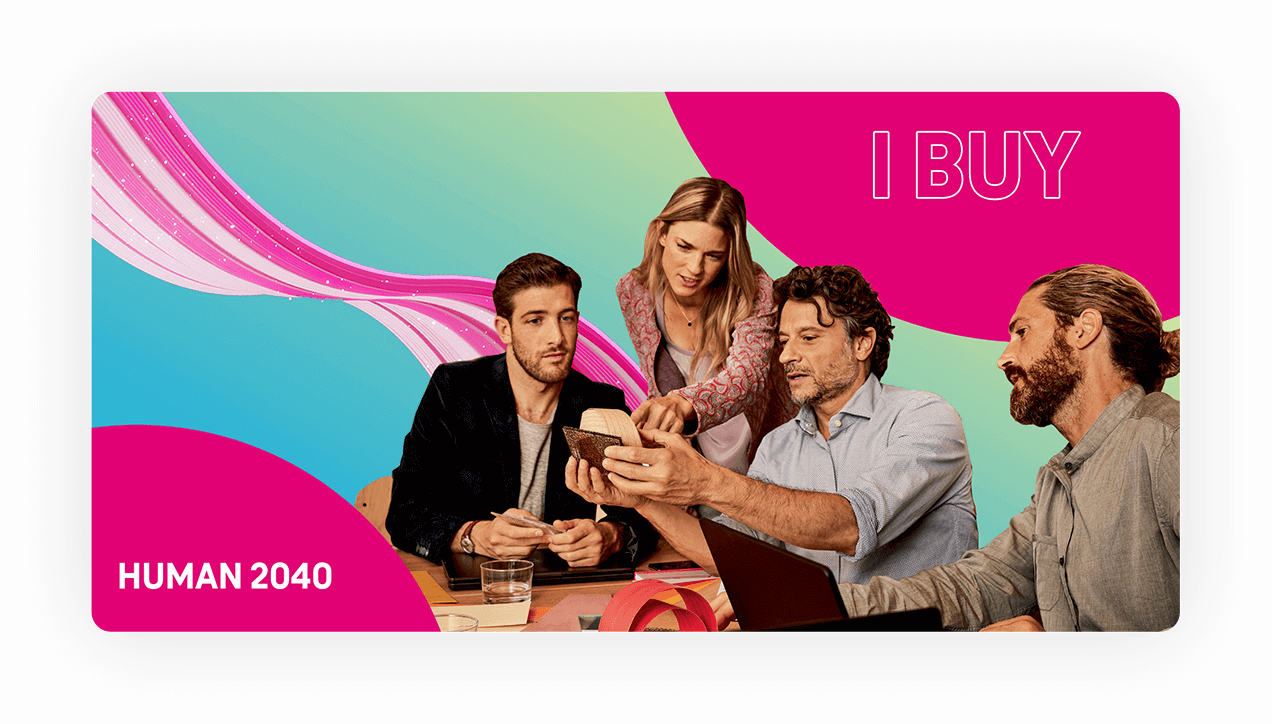In the sixth episode of the series "Human 2040", entitled "I buy", we move to the shopping world of the future. Can a smart home decide for itself what we need? How will we produce more sustainable meat in 2040? And will shopping malls survive until then? In the latest part of the series, analysts from Polityka Insight take a closer look at such trends as unmanned shops, the growing popularity of parcel machines or assistant services helping with clothes selection. In the podcast dedicated to the future of shopping hosted by Andrzej Bobiński, managing director of Polityka Insight, the guest is Tomasz Woźniak, founder, partner and CEO of Future Mind - a technology and consulting company that supports clients in digital initiatives and creates innovative mobile software.

‘FAST-FOOD’ ENTERS POLAND.
The Danish luxury restaurant network specializes in animal food. New restaurants use a drive-in sales model (for the motorized). Meat is supplied to the Danish network by a Polish company, Real Meat, with which the Danes are linked by capital.
‘Fast-Food’ is a Danish network founded on the wave of the ‘gourmet nostalgia’ trend. Since meat from laboratories does not differ from its animal original, restaurants are seeking solutions that help feel taste from times when ‘meat was meat’ as is said in the Real Meat's advertising campaign. Restaurants, which at the turn of the 20th and the 21st centuries were referred to as fast food, still operate successfully on the market; however, following prevailing consumer trends, they already offer only products of plant and laboratory origin, and most of the services are provided by way of delivery.
Newly opened restaurants are located on the borders of the megalopolis of Warsaw, Kraków and Wrocław. The network intends to cooperate with one of the car sharing companies and offer discounts to motorized consumers who rent a car for a nonurban tour. The discount is supposed to depend on the number of people in the car. However, the catering premises are not intended to generate income for the Polish and Danish consortium. ‘Fast-Food’ restaurants are intended to be a showcase for the company that is trying to enter the boxed food market.
Due to the high costs of animal meat production, the consortium is fighting for entry into the premium segment. It seeks to obtain a ‘superfood’ certificate for meat products, which would enable it to compete with leading producers of boxed food. The lobby of companies that produce synthetic meat is blocking the admission of producers of meat of animal origin to the list of certified superfoods. The Consortium argues that Polish and Danish beef and pork meets the statutory criteria of superfood, i.e. ‘balanced food in such a way as to provide the necessary nutrients in quantities and proportions individually adapted to one’s body’.
The case may be referred to the European Court of Human Rights (ECtHR), and Poles and Danes argue that the consumption of meat of animal origin in the EU is today so low that it has no longer any environmental impact and hyper-regulation of animal products violates consumer rights. In addition, the lawyers of both companies accuse the ‘boxed big six’ of unfair competition. According to the latest data, the largest companies in the industry already control 67% of the processed food market and 42% of the total food market in the EU.
GUS: 50% OF TRANSACTIONS IN THE E-COMMERCE CHANNEL TAKE PLACE WITHOUT HUMAN INTERVENTION
According to Central Statistical Office data, Poland is the eighteenth EU country to exceed the limit of 50% of transactions made with the use of autonomous purchases. Experts estimate that increases measured by the number of transactions are slowing down, but the value of autonomous transactions will continue to grow and may exceed 75% over the next four years.
In contrast, according to the most recent CBOS survey, the greatest value for consumers is convenience (82% of respondents; less than 96% below the age of 50) and timesaving (76% and 83%) in the performance of daily duties. For this reason, the e-commerce channel stabilized at a level of over 90% of all transactions. Most day-to-day purchases are made directly using smart home systems that help prepare the necessary purchase lists, plan the most effective time and course of purchases and actually carry out the entire purchasing process without the consumer's involvement.
Paradoxically, for about half of buyers (54% and 46%) it is still important to be able to physically contact and try the product before the final purchase, especially for durable consumer goods. Therefore, brick-and-mortar stores and shopping centres play an important social role. In particular, the latter are treated as places for leisure time with family and friends when testing and tailoring the desired products. Although most shopping in shopping centers takes place online (often using one-click-buy) with home delivery.
The remaining 10% of purchase transactions are made in housing estate convenience stores where the Poles buy non-essential products, i.e. products which are not ordered by our algorithm as they are not necessary for our body (e.g. sweets, snacks or alcoholic beverages). A wide network, small area and 24-hour availability, as well as the lack of service personnel provide only an illusion of anonymity as all purchases are recorded on accounts.
COOP TO HAS BECOME THE FIRST POLISH COMPANY ON THE FORTUNE 500 LIST
Szczeciński jednorożec, a company specialising in providing sales solutions for the world's largest brands, has entered the Fortune Global list with a bang and is ranked 456. The company was also ranked seven in the Software, UX and VR category.
COOP TO is a company founded in Szczecin in 2023 by two female IT specialists who have not yet agreed to the public disclosure of their identities. In one of the first interviews, the founders told the media that companies that focused on ‘what’ and ‘where’ they sell will remain behind in the race for the customer of the future. The question on which companies should focus is ‘how.’ They intend to provide solutions that will enable them to find the best and most effective answers to the only question that has let them outperform their competitors.
COOP TO started with the segment of unified trade. Polski jednorożec created systems to integrate online and offline stores. In the first years of its activity, the company specialized in the issue of liquid user experience which consists in the maximum integration of interfaces (e.g. a telephone or tablet) with the real world.
At the beginning of the 30s, after successive investment phases, COOP TO went shopping itself. The company bought four software boutiques specializing in immersive technologies – VR (virtual reality) or AR (augmented reality). The connection with the Pol-Hol software boutique, specializing in commercial exploitation of holograms, enabled COOP TO to sign a longterm contract with Nike and enter its solutions into the showrooms of the American company worldwide.
According to analysts, COOP TO has not missed any of the technologies that have shaped the way we buy today. Whether it was voice, remote control, trade intelligence breakthroughs or ultimately ‘open finance’ – the Polish company saw the opportunities of each technology and created a trading ecosystem, thanks to which over 50% of purchase transactions are made without our knowledge.


